Contents
Preface
1 Introduction
1.1 The phenomena of antenna coupling
1.2 Characterisation via the measurement process
1.2.1 Free space radiation pattern
1.2.2 Polarisation
1.2.3 Bandwidth
1.3 The organisation of the book
1.4 References
2 Maxwell's equations and electromagnetic wave propagation
2.1 Electric charge
2.2 The EM field
2.3 Accelerated charges
2.4 Maxwell's equations
2.5 The electric and magnetic potentials
2.5.1 Static potentials
2.5.2 Retarded potentials
2.6 The inapplicability of source excitation as a measurement methodology
2.7 Field equivalence principle
2.8 Characterising vector EM fields
2.9 Summary
2.10 References
3 Introduction to near-field antenna measurements
3.1 Introduction
3.2 Antenna measurements
3.3 Forms of near-field antenna measurements
3.4 Plane rectilinear near-field antenna measurements
3.5 Chambers, screening and absorber
3.6 RF subsystem
3.7 Robotics positioner subsystem
3.8 Near-field probe
3.9 Generic antenna measurement process
3.10 Summary
3.11 References
4 Plane wave spectrum representation of electromagnetic waves
4.1 Introduction
4.2 Overview of the derivation of the PWS
4.3 Solution of the scalar Helmholtz equation in Cartesian coordinates
4.3.1 Introduction to integral transforms
4.3.2 Fourier transform solution of the scalar Helmholtz equation
4.4 On the choice of boundary conditions
4.5 Operator substitution (derivative of a Fourier transform)
4.6 Solution of the vector Helmholtz equation in Cartesian coordinates
4.7 Solution of the vector magnetic wave equation in Cartesian coordinates
4.8 The relationship between electric and magnetic spectral components
4.9 The free-space propagation vector k
4.10 Plane wave impedance
4.11 Interpretation as an angular spectrum of plane waves
4.12 Far-field antenna radiation patterns: approximated by the angular spectrum
4.13 Stationary phase evaluation of a double integral
4.14 Coordinate free form of the near-field to angular spectrum transform
4.15 Reduction of the coordinate free form of the near-field to far-field transform to Huygens' principle
4.16 Far-fields from non-planar apertures
4.17 Microwave holographic metrology (plane-to-plane transform)
4.18 Far-field to near-field transform
4.19 Radiated power and the angular spectrum
4.20 Summary of conventional near-field to far-field transform
4.21 References
5 Measurements - practicalities of planar near-field antenna measurements
5.1 Introduction
5.2 Sampling (interpolation theory)
5.3 Truncation, spectral leakage and finite area scan errors
5.4 Antenna-to-antenna coupling (transmission) formula
5.4.1 Attenuation of evanescent plane wave mode coefficients
5.4.2 Simple scattering model of a near-field probe during a planar measurement
5.5 Evaluation of the conventional near-field to far-field transform
5.5.1 Standard techniques for the evaluation of a double Fourier integral
5.6 General antenna coupling formula: arbitrarily orientated antennas
5.7 Plane-polar and plane-bipolar near-field to far-field transform
5.7.1 Boundary values known in plane-polar coordinates
5.7.2 Boundary values known in plane-bipolar coordinates
5.8 Regular azimuth over elevation and elevation over azimuth coordinate systems
5.9 Polarisation basis and antenna measurements
5.9.1 Cartesian polarisation basis - Ludwig I
5.9.2 Polar spherical polarisation basis
5.9.3 Azimuth over elevation basis - Ludwig II
5.9.4 Copolar and cross-polar polarisation basis - Ludwig IIII
5.9.5 Circular polarisation basis - RHCP and LHCP
5.10 Overview of antenna alignment corrections
5.10.1 Scalar rotation of far-field antenna patterns
5.10.2 Vector rotation of far-field antenna patterns
5.10.4 Rotation of copolar polarisation basis - generalized Ludwig III
5.10.5 Generalized compound vector rotation of far-field antenna patterns
5.11 Brief description of near-field coordinate systems
5.11.1 Range fixed system
5.11.2 Antenna mechanical system
5.11.3 Antenna electrical system
5.11.4 Far-field azimuth and elevation coordinates
5.11.5 Ludwig III copolar and cross-polar definition
5.11.6 Probe alignment definition (SPP)
5.11.7 General vector rotation of antenna radiation patterns
5.12 Directivity and gain
5.12.1 Directivity
5.12.2 Gain - by substitution method
5.12.3 Gain-transfer (gain-comparison) method
5.13 Calculating the peak of a pattern
5.13.1 Peak by polynomial fit
5.13.2 Peak by centroid
5.14 Summary
5.15 References
6 Probe pattern characterisation
6.1 Introduction
6.2 Effect of the probe pattern on far-field data
6.3 Desirable characteristics of a near-field probe
6.4 Acquisition of quasi far-field probe pattern
6.4.1 Sampling scheme
6.4.2 Electronic system drift (tie-scan correction)
6.4.3 Channel-balance correction
6.4.4 Assessment of chamber multiple reflections
6.4.5 Correction for rotary errors
6.4.6 Re-tabulation of probe vector pattern function
6.4.7 Alternate interpolation formula
6.4.8 True far-field probe pattern
6.5 Finite element model of open-ended rectangular waveguide probe
6.6 Probe displacement correction
6.7 Channel-balance correction
6.8 References
7 Computational electromagnetic model of a planar near-field measurement process
7.1 Introduction
7.2 Method of sub-apertures
7.3 Aperture set in an infinite perfectly conducting ground plane
7.3.1 Plane wave spectrum antenna-antenna coupling formula
7.4 Vector Huygens- method
7.5 Kirchhoff-Huygens' method
7.6 Generalized technique for the simulation of near-field antenna measurements
7.6.1 Mutual coupling and the reaction theorem
7.7 Near-field measurement simulation
7.8 Reaction theorem
7.8.1 Lorentz reciprocity theorem (field reciprocity theorem)
7.8.2 Generalized reaction theorem
7.8.3 Mutual impedance and the reaction theorem
7.9 Summary
7.10 References
8 Antenna measurement analysis and assessment
8.1 Introduction
8.2 The establishment of the measure from the measurement results
8.2.1 Measurement errors
8.2.2 The sources of measurement ambiguity and error
8.2.3 The examination of measurement result data to establish the measure
8.3 Measurement error budgets
8.3.1 Applicability of modelling error sources
8.3.2 The empirical approach to error budgets
8.4 Quantitative measures of correspondence between data sets
8.4.1 The requirement for measures of correspondence
8.5 Comparison techniques
8.5.1 Examples of conventional data set comparison techniques
8.5.2 Novel data comparison techniques
8.6 Summary
8.7 References
9 Advanced planar near-field antenna measurements
9.1 Introduction
9.2 Active alignment correction
9.2.1 Acquisition of alignment data in a planar near-field facility
9.2.2 Acquisition of mechanical alignment data in a planar near-field facility
9.2.3 Example of the application of active alignment correction
9.3 Amplitude only planar near-field measurements
9.3.1 PTP phase retrieval algorithm
9.3.2 PTP phase retrieval algorithm - with aperture constraint
9.4 Efficient position correction algorithms, in-plane and z-plane corrections
9.4.1 Taylor series expansion
9.4.2 K-correction method
9.5 Partial scan techniques
9.5.1 Auxiliary translation
9.5.2 Rotations of the AUT about the z-axis
9.5.3 Auxiliary rotation - bi-planar near-field antenna measurements
9.5.4 Near-field to far-field transformation of probe corrected data
9.5.5 Applicability of the poly-planar technique
9.5.6 Complete poly-planar rotational technique
9.6 Concluding remarks
9.7 References
Appendix A: Other theories of interaction
A.1 Examples of postulated mechanisms of interaction
Appendix B: Measurement definitions as used in the text
Appendix C: An overview of coordinate systems
C.1 Antenna mechanical system (AMS)
C.2 Antenna electrical system (AES)
C.3 Far-field plotting systems
C.4 Direction cosine
C.5 Azimuth over elevation
C.6 Elevation over azimuth
C.7 Polar spherical
C.8 Azimuth and elevation (true-view)
C.9 Range of spherical angles
C.10 Transformation between coordinate systems
C.11 Coordinate systems and elemental solid angles
C.12 Relationship between coordinate systems
C.13 Azimuth, elevation and Roll angles
C.14 Euler angles
C.15 Quaternion
C.16 Elemental solid angle for a true-view coordinate system
Appendix D: Trapezoidal discrete Fourier transform
Appendix E: Calculating the semi-major axis, semi-minor axis and tilt angle of a rotated ellipse
Index

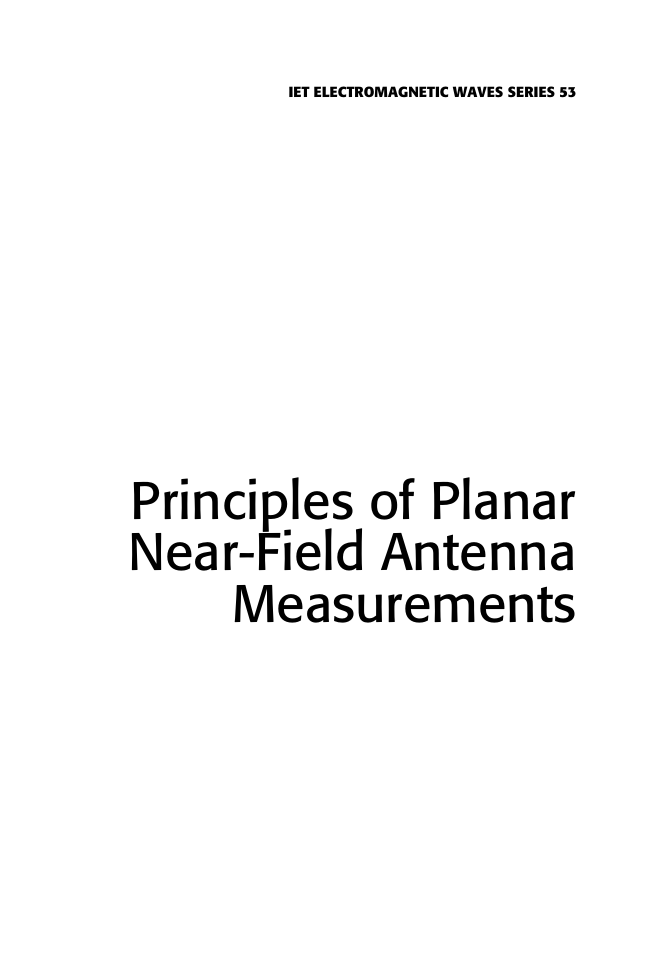
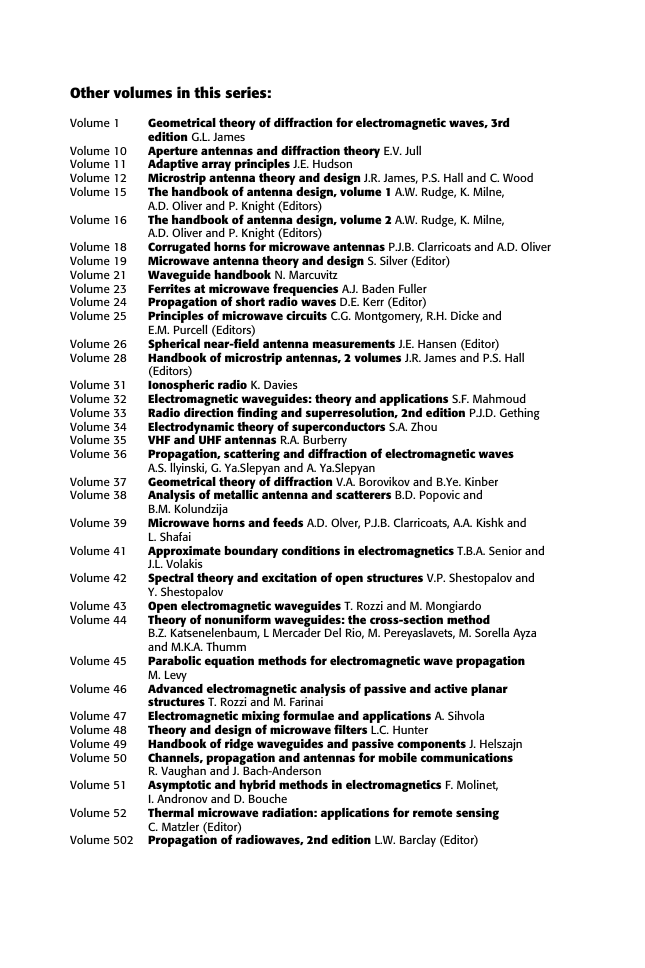
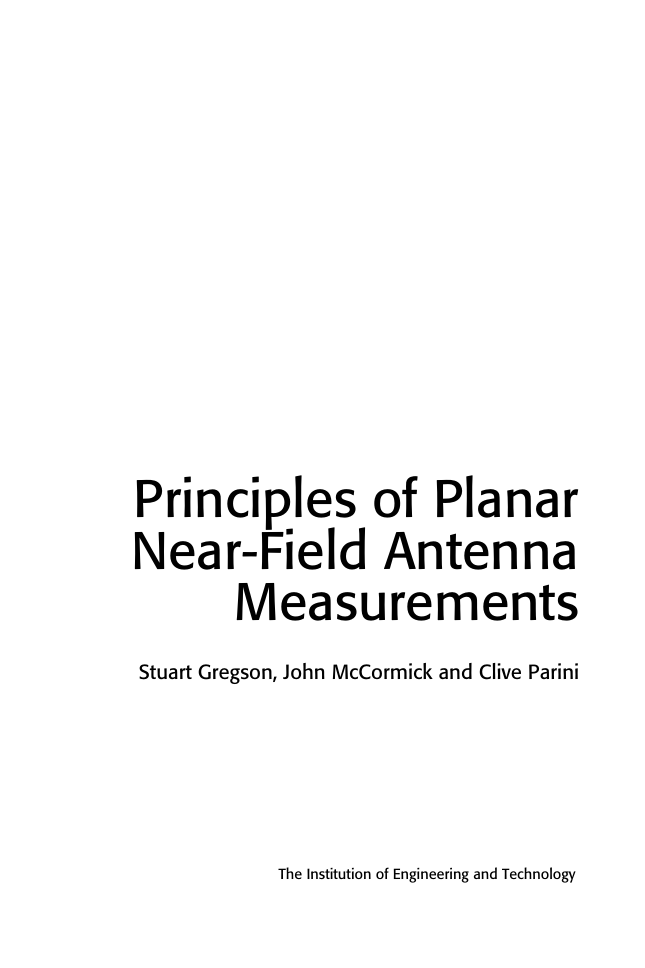
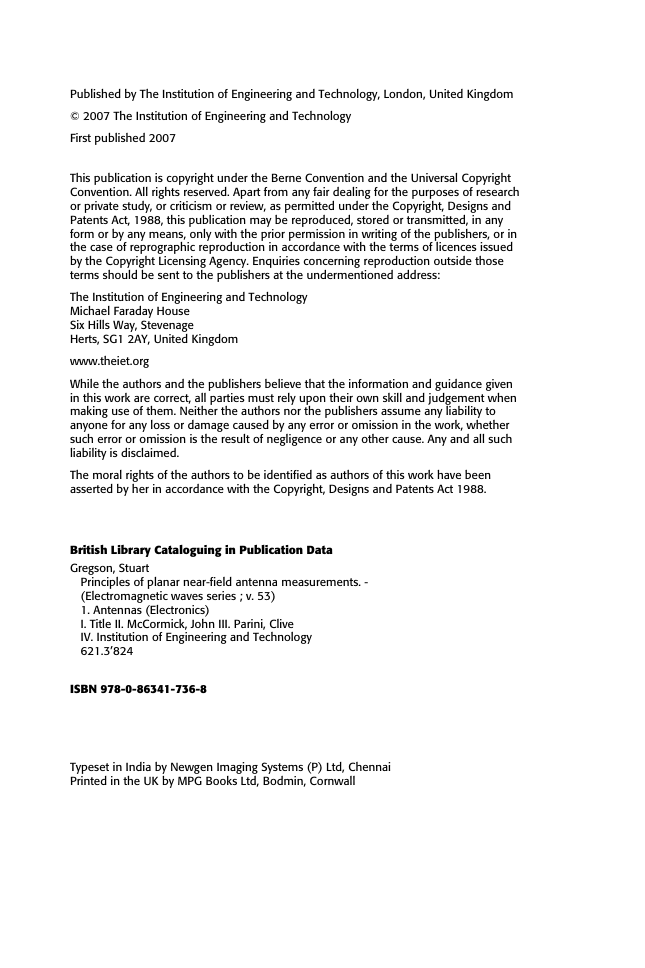
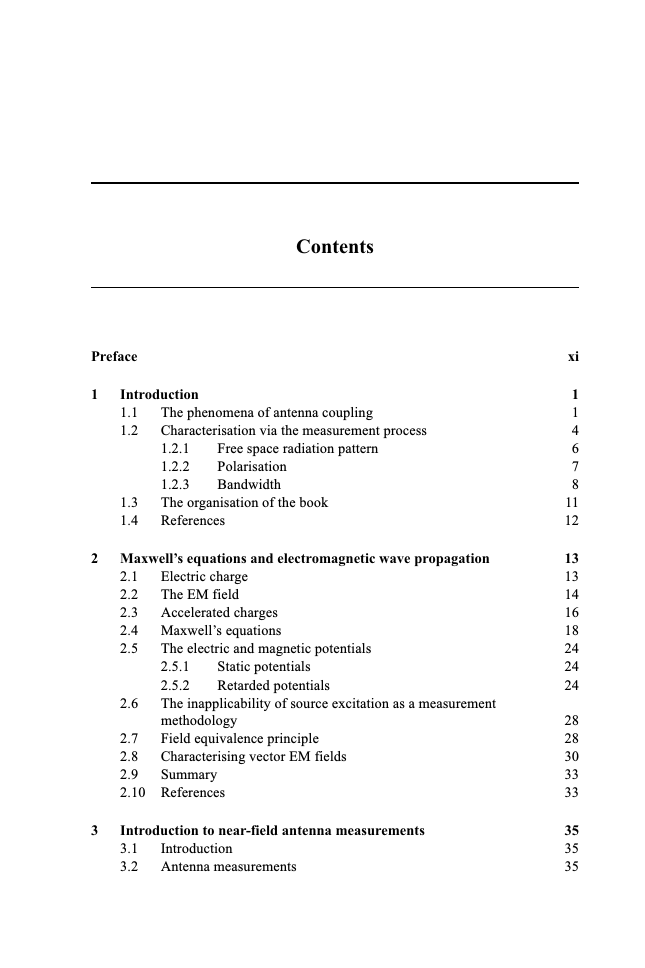
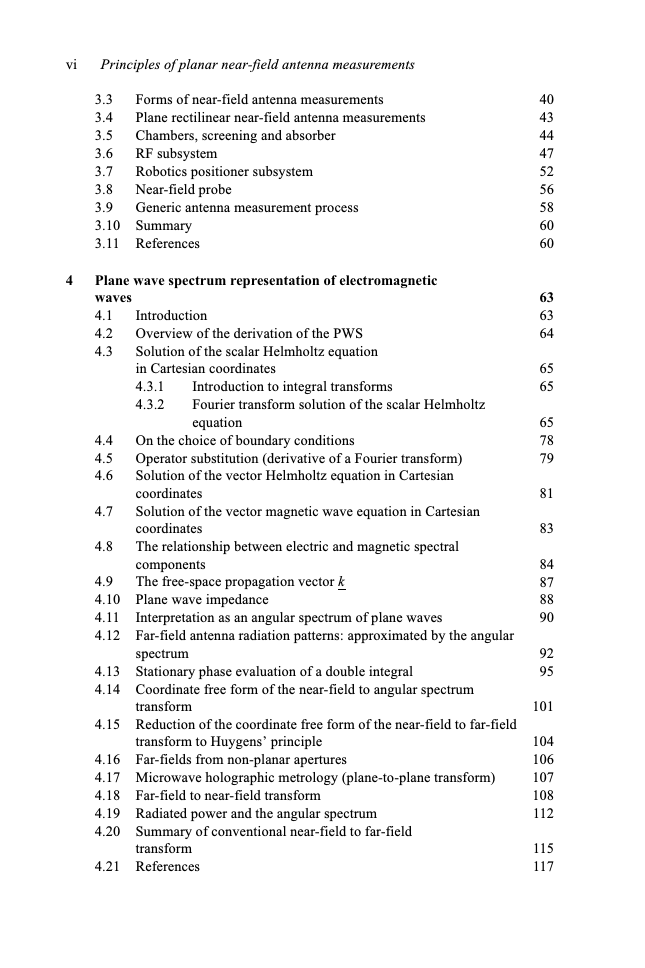
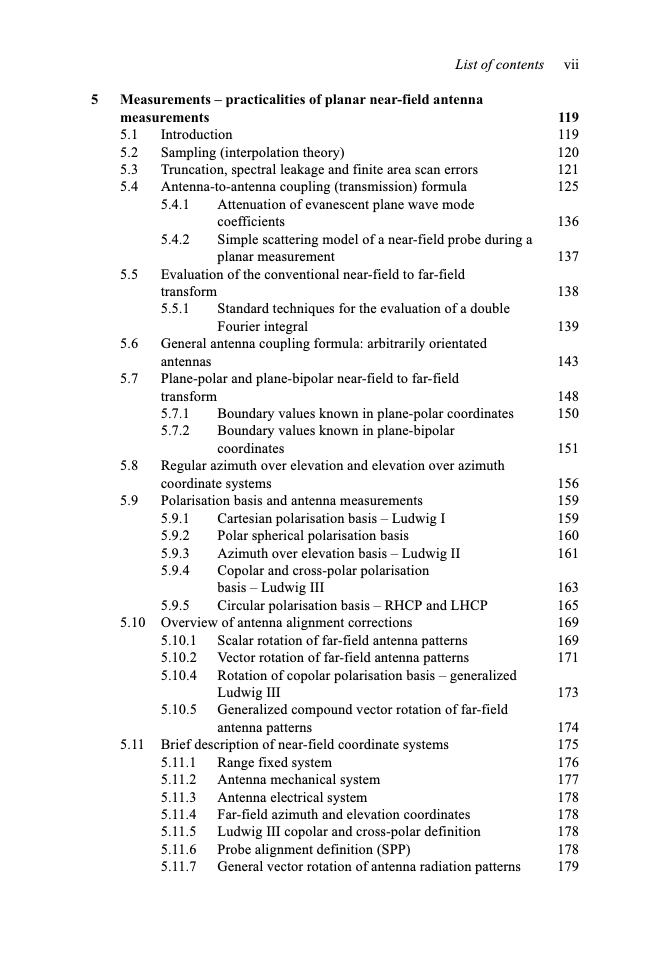








 2023年江西萍乡中考道德与法治真题及答案.doc
2023年江西萍乡中考道德与法治真题及答案.doc 2012年重庆南川中考生物真题及答案.doc
2012年重庆南川中考生物真题及答案.doc 2013年江西师范大学地理学综合及文艺理论基础考研真题.doc
2013年江西师范大学地理学综合及文艺理论基础考研真题.doc 2020年四川甘孜小升初语文真题及答案I卷.doc
2020年四川甘孜小升初语文真题及答案I卷.doc 2020年注册岩土工程师专业基础考试真题及答案.doc
2020年注册岩土工程师专业基础考试真题及答案.doc 2023-2024学年福建省厦门市九年级上学期数学月考试题及答案.doc
2023-2024学年福建省厦门市九年级上学期数学月考试题及答案.doc 2021-2022学年辽宁省沈阳市大东区九年级上学期语文期末试题及答案.doc
2021-2022学年辽宁省沈阳市大东区九年级上学期语文期末试题及答案.doc 2022-2023学年北京东城区初三第一学期物理期末试卷及答案.doc
2022-2023学年北京东城区初三第一学期物理期末试卷及答案.doc 2018上半年江西教师资格初中地理学科知识与教学能力真题及答案.doc
2018上半年江西教师资格初中地理学科知识与教学能力真题及答案.doc 2012年河北国家公务员申论考试真题及答案-省级.doc
2012年河北国家公务员申论考试真题及答案-省级.doc 2020-2021学年江苏省扬州市江都区邵樊片九年级上学期数学第一次质量检测试题及答案.doc
2020-2021学年江苏省扬州市江都区邵樊片九年级上学期数学第一次质量检测试题及答案.doc 2022下半年黑龙江教师资格证中学综合素质真题及答案.doc
2022下半年黑龙江教师资格证中学综合素质真题及答案.doc